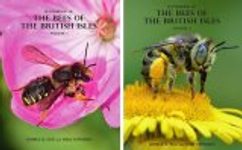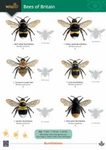About this book
The ant subfamily Dorylinae (Hymenoptera: Formicidae) is a group that includes the charismatic ‘true army ants’ as well as a number of less-known lineages. This monograph introduces a new generic classification for the subfamily, building upon recent phylogenetic discoveries and a re-evaluation of morphology of doryline species. Taxonomic account of all doryline genera is prefaced with a summary of the history of systematic and phylogenetic research in the subfamily and a succinct introduction to the group’s biology. The newly proposed classification recognizes 28 genera in the Dorylinae and is designed to reflect evolutionary relationships and facilitate identification. New illustrated keys for identification of workers and males are provided. Each genus account is accompanied by illustrations based on representative worker and male specimens and a distribution map. Detailed diagnoses and descriptions are given for the worker and male, along with a discussion of gyne morphology and, where available, references on larval morphology. In addition to the diagnoses and descriptions, the genus accounts are accompanied by notes on distribution, taxonomy and phylogeny, and natural history. Finally, a checklist of all valid species and subspecies in each genus is included.
Contents
Preface 3
Material and methods 3
Brief introduction to doryline ants 5
History of taxonomic and phylogenetic research 6
Current views on doryline classification and evolution 11
Classification of the Dorylinae proposed here 14
Morphology 16
Diagnostic characters of the worker 18
Diagnostic characters of the male 25
Diagnostic characters of the gyne 26
Characters used to describe worker morphology 26
Characters used to describe male morphology 33
Characters used to describe gyne morphology 36
Key to the genera of doryline ants based on workers 37
Provisional key to the genera of doryline ants based on males 52
Taxonomic treatment of the genera of Dorylinae 66
Acanthostichus Mayr, 1887 66
Aenictogiton Emery, 1901b 73
Aenictus Shuckard, 1840b 78
Cerapachys Smith, F., 1857 90
Cheliomyrmex Mayr, 1870 95
Chrysapace Crawley, 1924a, gen. rev. 101
Cylindromyrmex Mayr, 1870 106
Dorylus Fabricius, 1793 112
Eburopone gen. n. 124
Eciton Latreille, 1804 129
Eusphinctus Emery, 1893a, gen. rev. 138
Labidus Jurine, 1807 144
Leptanilloides Mann, 1923 150
Lioponera Mayr, 1879, gen. rev. 156
Lividopone Fisher & Bolton, 2016 165
Neivamyrmex Borgmeier, 1940 170
Neocerapachys gen. n. 180
Nomamyrmex Borgmeier, 1936 185
Ooceraea Roger, 1862, gen. rev. 191
Parasyscia Emery, 1882, gen. rev. 198
Procerapachys Wheeler, W. M. 1915b 205
Simopone Forel, 1891 208
Sphinctomyrmex Mayr, 1866b 214
Syscia Roger, 1861, gen. rev. 219
Tanipone Bolton & Fisher, 2012 225
Vicinopone Bolton & Fisher, 2012 230
Yunodorylus Xu, 2000, gen. rev. 232
Zasphinctus Wheeler, W. M., 1918, gen. rev. 237
Acknowledgments 243
References 244
Appendix 275
Customer Reviews

















































